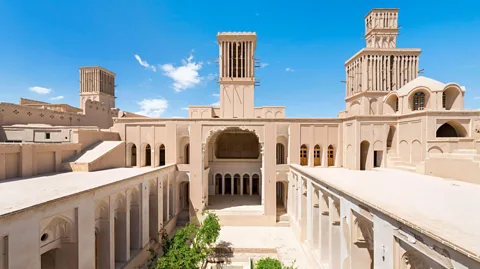How Did Ancient Egyptians and Persians Keep Their Homes Cool?
From Ancient Egypt to the Persian Empire people have been cooling their homes for thousands of years by catching the breeze In the quest for emission free cooling could we go back to the old days of wind catchers?
The city of Yazd in the central Iranian desert has always been a Hotbed of ingenuity and creativity Yazd has ancient engineering marvels like underground cooling structure called a Yakhchal, underground irrigation system called qanats and even a network of couriers called “Pardazis” that predated the postal services in the US by over 2,000 years.
One of the ancient Technologies that originated in Yazd is the wind catcher known as Badgir in persian. these amazing structures still rise above the rooftops of Yazd sometimes as rectangular towers and sometimes circular, square or octagonal.
Yazd is said to have the most wind catchers in the world Although this might have been first mentioned in Ancient Egypt In Yazd wind catchers became essential making life possible in this hot and dry part of the Iranian plateau.
Although many wind catchers in the city are no longer in use today these structures now Attract Academics and architects to this desert city to study how wind catchers can help us overcome the heat caused by climate change.
Since wind catchers don’t need electricity to work they are low cost and eco friendly. Traditional mechanical air conditioners already consume one fifth of the world’s total electricity production so ancient Alternatives like wind catchers are getting more and more attractive.
Two forces make air flow Through and down these structures: incoming wind and the change in air buoyancy due to temperature where warmer air rises above the cooler denser air.
First air is captured through the wind catcher opening and directed into the house below any sand or debris falls at the base of the tower.
Then the air flows through the building’s interior sometimes over underground water basins to cool. Then warm air rises and exits the building through another tower or vent with the building’s internal pressure helping.
The shape of the tower along with the house layout the direction the tower faces the number of openings channels and tower height was all calculated to draw wind into the house below.
Using wind to cool buildings has been around since people started living in hot desert environments. The oldest wind catching techniques date back 3,300 years to Egypt, according to researchers Chris Soelberg and Julie Rich from Weber State University in Utah.
Buildings had thick walls, few windows to the sun, air intake openings from the prevailing wind direction and air exit vents on the other side known as "malqaf". However some claim Iran was the first to invent the wind catcher method for cooling buildings.
Regardless of where this technique was first developed, wind catchers spread throughout the Middle East and North Africa. Variations of Iranian wind catchers can be found in Qatar and Bahrain (Barjeel), Egypt (malqaf), Pakistan (mung) and many other places, according to Fatemeh Ghomi Zadeh and colleagues from University of Technology in Malaysia.
The Persian civilization added structural variations to the wind catcher to make it even cooler, by integrating it with the existing irrigation system to cool the air before it circulated through the house.
In Yazd hot desert climate these catchers worked well so the city has many tall and ornate structures to catch the desert winds.
UNESCO recognized the historical city of Yazd as a World Heritage Site in 2017 partly due to the wind catchers.
Besides their functional purpose of cooling the houses, these towers had cultural significance. in yazd wind catchers are part of the city skyline, along with Zoroastrian fire temples and the Tower of Silence the most famous being the wind catcher in Dowlat Abad Gardens said to be the tallest in the world at 33 meters (108 feet) and one of the few still working. This wind catcher is in an octagonal building overlooking a fountain surrounded by rows of pine trees.
Some researchers believe the effectiveness of wind catchers in emission free cooling could lead people to turn to them once again.
 English
English  Spanish
Spanish  Chinese
Chinese  French
French  Portuguese
Portuguese  Italian
Italian  Russian
Russian  Czech
Czech  German
German  Japanese
Japanese 








